It seems to me like this: if you already went on a trip by car, then you need to live in it! Spend the night along the route or stop to rest for a few days in picturesque locations. You can, of course, in a tent, as many do, but it is less comfortable, especially in bad weather or with children. Hotels are expensive, and they are not always located in suitable places where you would like to stay. With your own home on wheels, you are your own boss! Well, it’s understandable when such a house is spacious, so that there is a kitchen, a sanitary area, a bedroom, and a mess room for remote work or activities with children. For this purpose, a couple of years ago I purchased a decommissioned Soviet bus in order to make a big real camper out of it (English camper – house on wheels) and go on a trip around the world with my family – and why not?! In the meantime, while my self-propelled ark is under construction (there is still a lot of work to do with it), I often come up with other possible projects in the evenings. I would like to introduce the readers of the magazine to one of these. Please do not judge my “fantasy” too harshly – this is, so to speak, just a working sketch for now. During my student years, I had a homemade trike with suspension from “Ant”, rear wheels from “Tula”, front end from an old “Minsk”, engine from a “disabled car”. I drove it around the city and through the forest – it was a quite stable machine. Yes, and unpretentious. In the countries of the East and Asia, by the way, there are still a lot of tricycles, like our “Ant”, so why not make a small motorcycle camper based on it?


I predict that this idea will seem completely crazy to many, but world experience indicates the opposite: home-made people actually build and operate such structures.
I recently came across a story on the Internet about how some enthusiasts, having restored an old rusty Ant, installed a living module made of plywood on its cargo platform. True, that house turned out to be too “chubby”, while the driver, sitting behind the wheel of a scooter, was exposed to all the winds and rains. I thought of a more comfortable option.
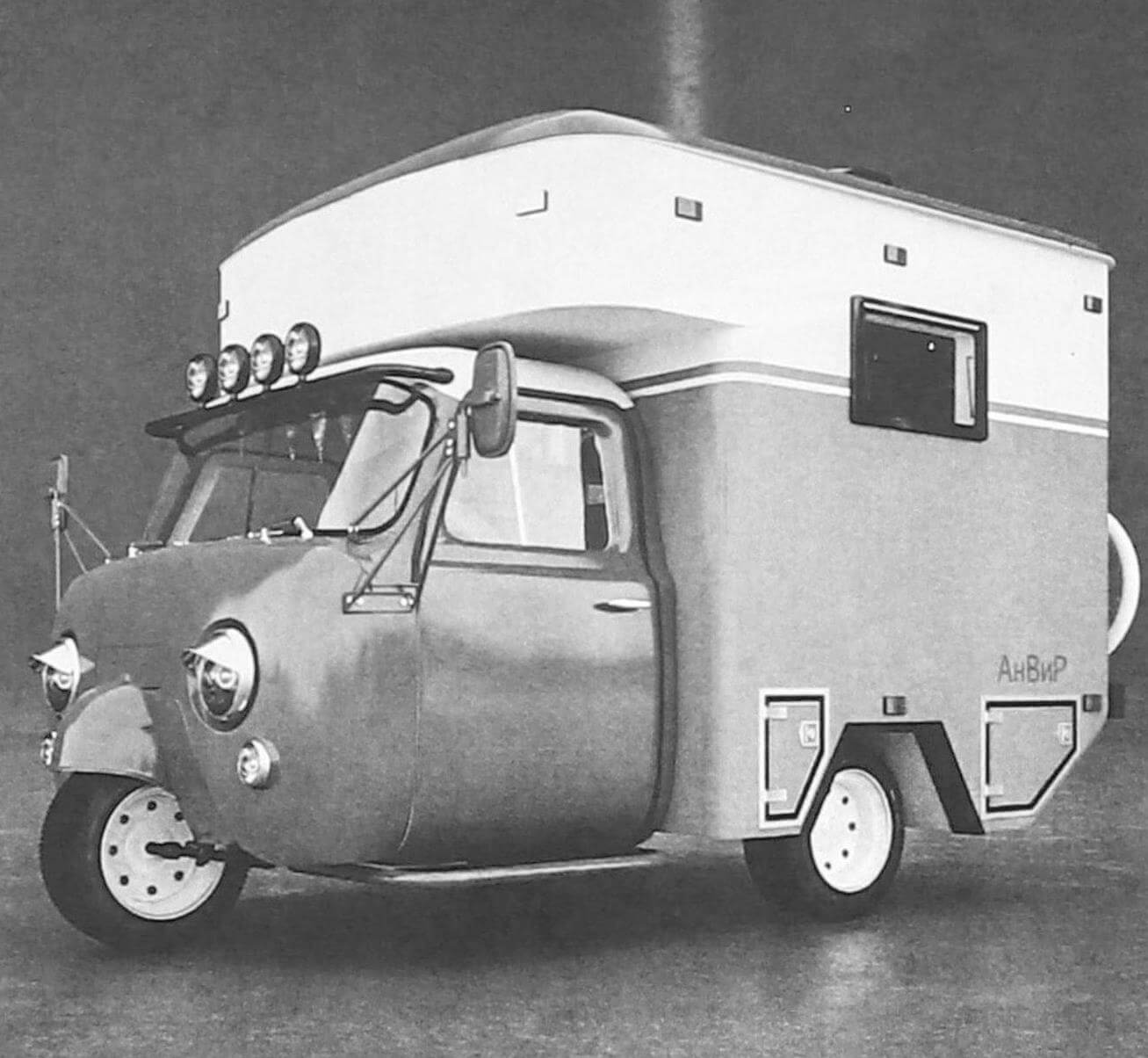
Let’s start with the chassis. Obviously, it will need to be strengthened. Instead of small 10-inch wheels, you need to install car wheels, which are more reliable. The idea was not taken out of thin air – look, for example, for photographs of a BMW motorcycle with a side trailer for long, multi-day trips: it uses exactly these wheels. Accordingly, you will need to change the suspension and rear axle shafts. Let me make a reservation right away that in my drawings all this is shown quite conditionally. The main attention is paid to the residential module.
I think that any reader with at least a little knowledge of domestic cars will immediately determine which equipment served as the donor for the creation of the virtual “Ant” traveler. From the front you can see the cabin panel from the UAZ “loaf”. I decorated the chrome rims of the headlights with visors – a favorite technique of American tuningists. I think it turned out nice.
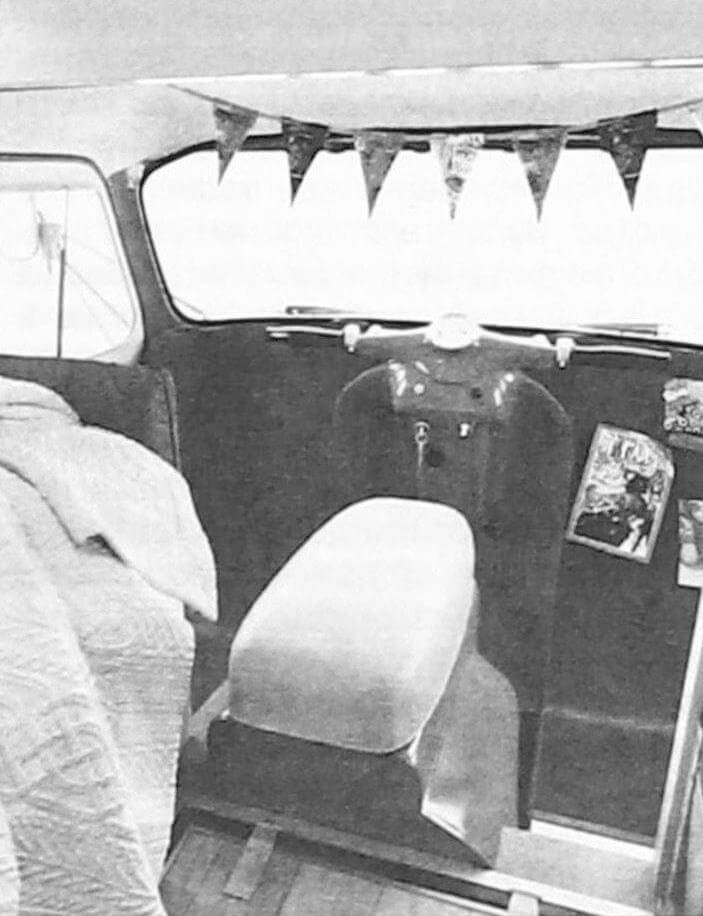
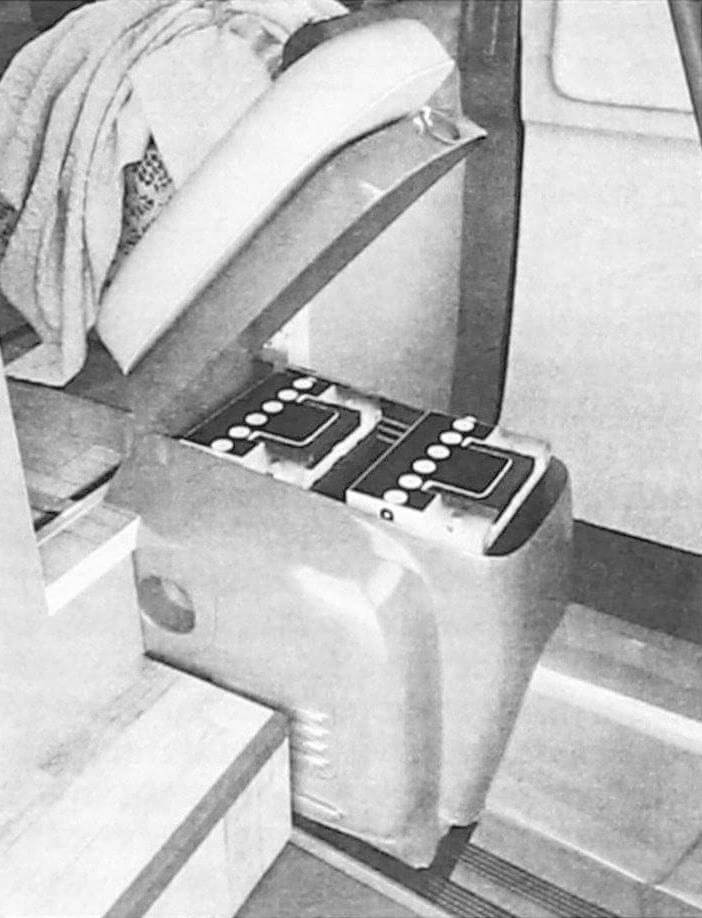
Next comes part of the cabin from the GAZ-53 truck – this is easy to recognize by the doors and side mirrors mounted on brackets. The residential module itself is of its own design, but its roof is from the same “loaf”. The walls can be made of metal, plastic or sandwich panels. The main thing here is not to overdo it with the mass. The driver’s motorcycle position is preserved in the cabin; he is also the only occupant of the motorcycle lodge. That’s right: the mini-camper is designed for one person. And it is proposed to get into it through the right door. By opening the left one, you can only take a seat behind the wheel, since the protruding corner of the bed will not allow you to enter the “living room”. For ease of entry, there are pipe steps, which will also protect the body from damage during careless maneuvering.
Inside the motorhome there is everything you need for life. Firstly, the berth is on the left side. On it, a person of normal build can stretch out to his full height, placing his head towards the back wall. The headboard has a convenient shelf for small items and a wall lamp. Secondly, opposite the bed there is a compact kitchen and utility unit, consisting of a small table, a sink with a tap and a cabinet for things.
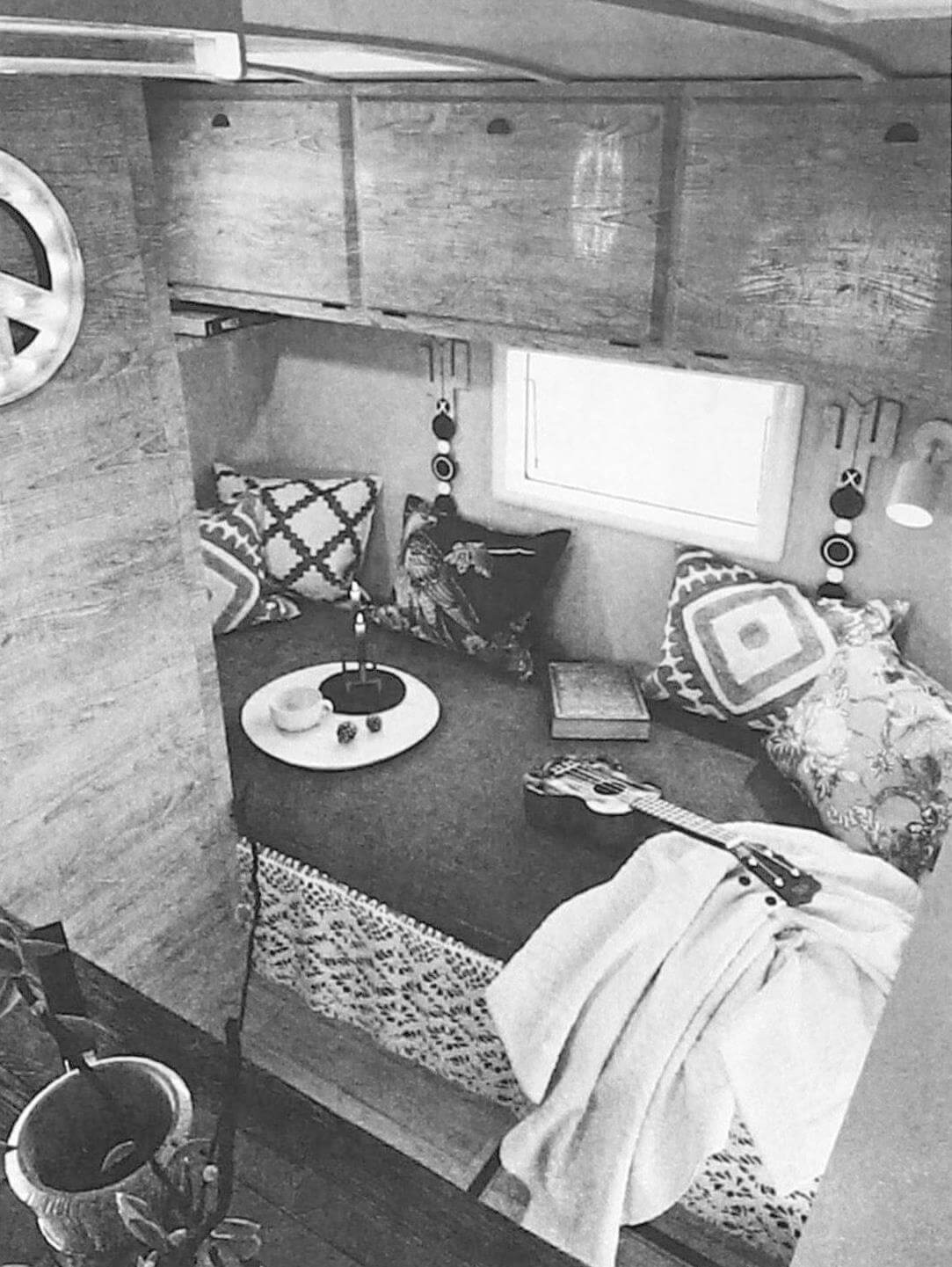
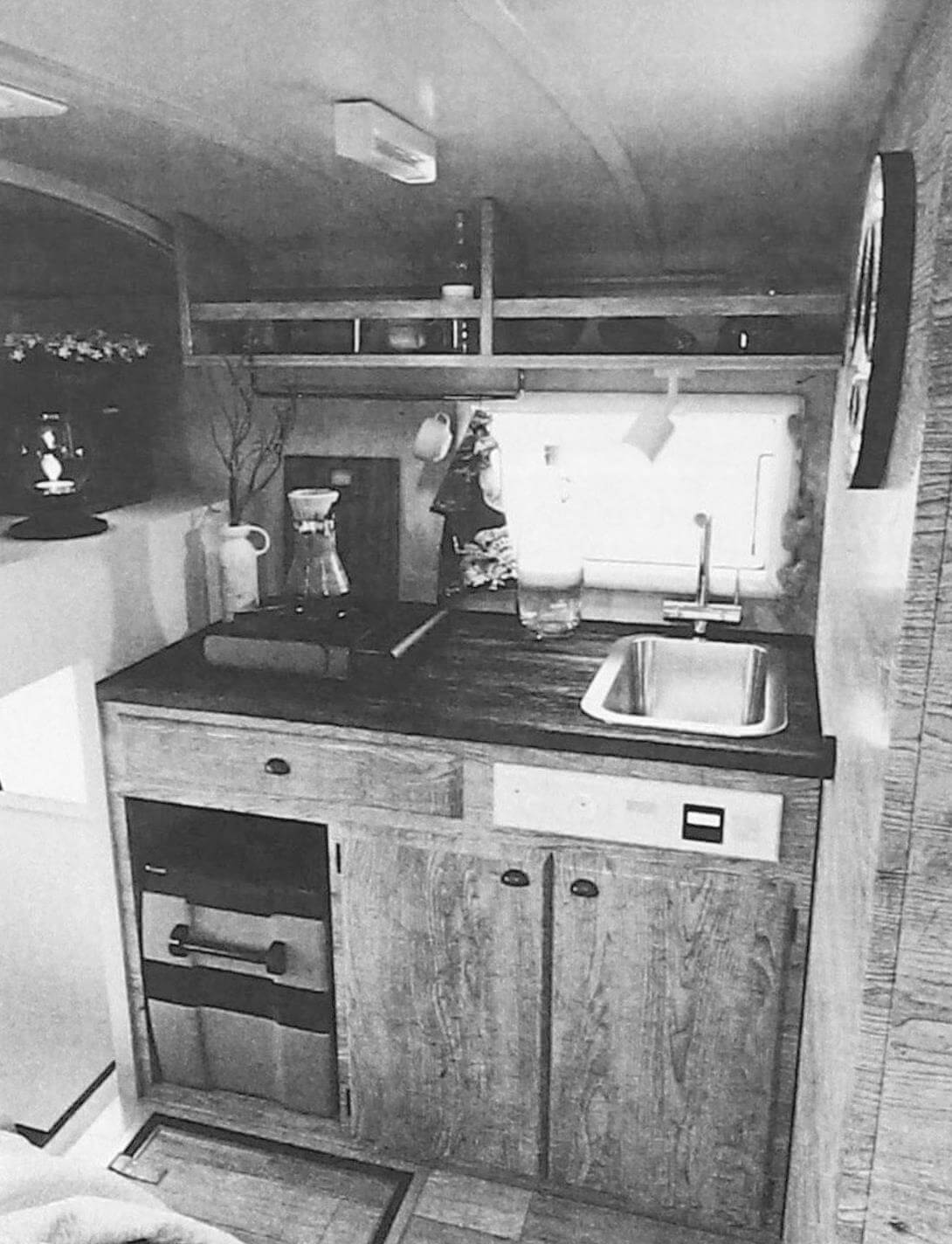
The refrigerator in the niche below is portable, not stationary. Just like a gas stove – it is the simplest, tourist one, with a removable cartridge. Why is that? The fact is that the house is very small and it is not very rational to develop vigorous activity in it. If the weather permits, it is easier to cook outside by taking out the stove and refrigerator with a supply of food. There are also no stationary water tanks, like on large campers. They are replaced by canisters of water placed on the right side of the rear overhang, in a niche accessible through a hatch from the outside. Water is supplied to the washbasin by an electric pump.
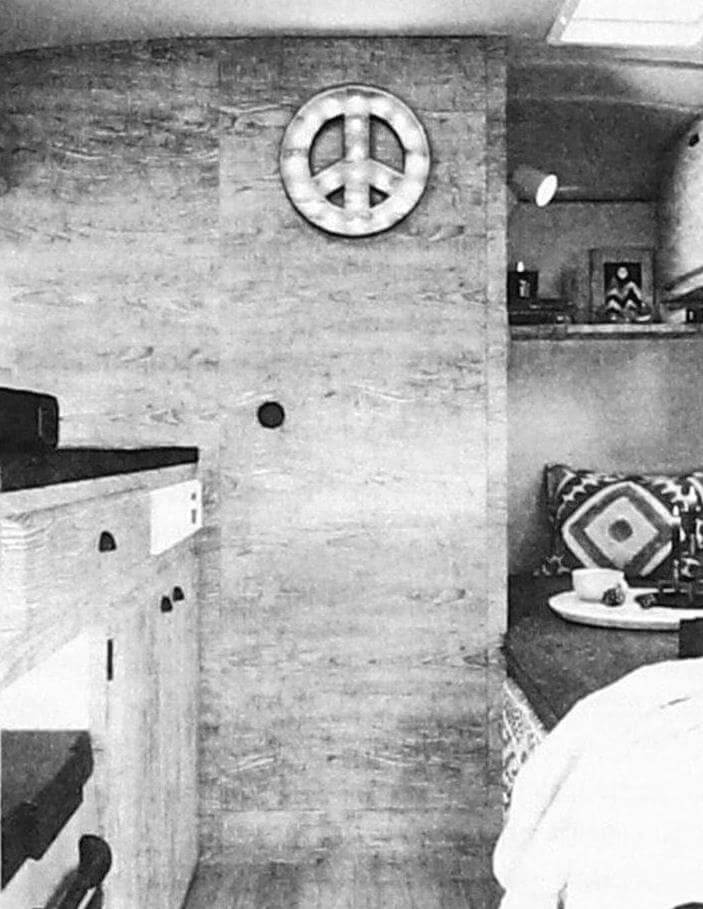
An important issue when traveling is hygiene. She needs
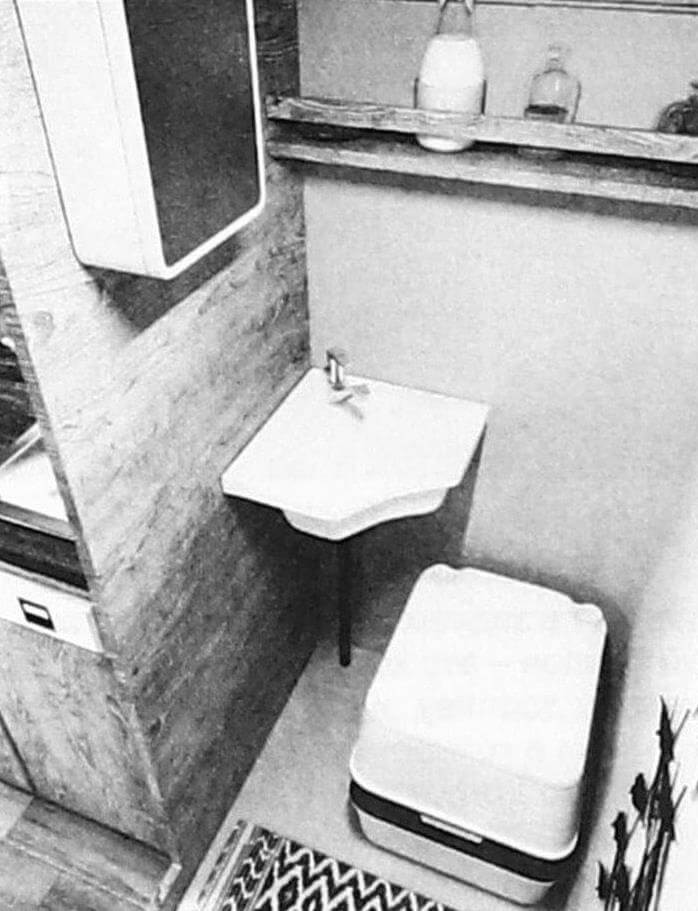
o pay increased attention, so a small shower stall, even despite the small volume of the residential module, is still included in the design. A dry toilet is also installed here. In the meantime, while water procedures are not carried out, the volume of the bathroom can be used as a wardrobe for outerwear. This is practical if it is raining outside, for example, then the water from the removed raincoat will flow into the shower tray. You can also throw wet boots in there.


Probably, the reader reading these lines has one question spinning in his head: will the Ant’s weak two-stroke engine take away all this stuff? As in the famous joke about a plane stuffed with all sorts of goodies: “Now we’ll try to take off,” remember? Of course, I perfectly understand all these concerns, so I don’t count on a standard engine – the engine must be completely different.
Pay attention to the layout. When we recline the seat in the engine compartment of the scooter, we won’t even see the engine there—I placed the batteries for the house’s power supply system here. They can be charged from solar panels located on the roof, and in the parking lot – from the network, if there is one nearby. The motor is located under the floor of the residential module, in front of the rear axle, which causes a low center of gravity of the vehicle and, accordingly, gives it good stability. I think a peppy and light power unit with an automatic transmission from some Japanese minivan, with a so-called “lying unit”, would be suitable, because the height dimensions are limited here. There is a hatch in the floor for its maintenance. And in the rear overhang there is a gas cylinder – this is a good alternative to liquid fuel, and this possibility is included in the concept of the motorhome.
Typically, builders of car campers or residential modules installed in the backs of pickup trucks place a sleeping place in the alcove, but here this compartment is reserved for household needs. There is a warehouse for things needed on a long journey, and an organizer for essentials. You can hang a flat TV panel on the wall of the alcove facing the “living room”. Large items are stored under the bed.
Well, now let’s look at the outside of the body, in particular at its rear. There is a rack for transporting a bicycle. This lightweight, non-motorized and unpretentious vehicle is always ready for use, allowing you to quickly conduct road reconnaissance, or go to the grocery store, so as not to drive the tricycle in vain. A bicycle is a useful thing when traveling.
The Soviet “Ant” now belongs to the category of rare equipment. But there are inexpensive Chinese cars with similar consumer qualities, and my project, it seems to me, is quite possible to bring to life – if only I had the desire. I am sure that such a motorhome will be suitable for traveling around central Russia in the warm season, for trips along the Black Sea coast of Crimea or the Caucasus. And if necessary, insulating it by covering the walls with thin sheets of thermal insulation will not be a problem either.
Anatoly RUDOV



